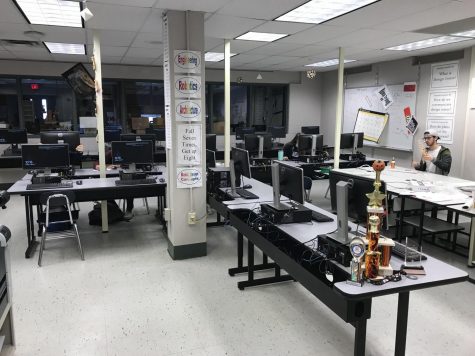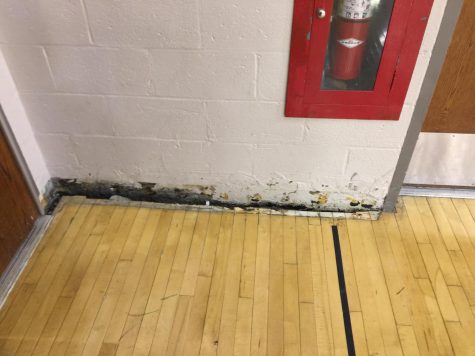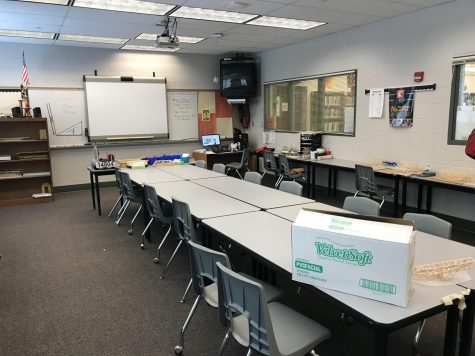High School Recovers from Pipe Bursts
March 4, 2019
Pipes burst at the high school, causing significant damage and days off on Feb. 4 and 5.
Custodians, mechanics and teachers from the school district came to Susquehannock High School to help clean around the school.
Director of Operations Randy Buffington got a call when everything occurred.
“We actually had two water damages, the one was bigger than the other,” said Buffington. “… Our building is fully fire sprinkler [activated] so it is backed up with 80,000 gallons of water. Both of those [sprinkler] heads froze, [which] broke the head and [then] water came rushing out.”
Damage was in specific areas of the school, including the women’s physical education office, the auditorium lobby, and teacher James Rayburn’s CAD room.

Photograph by Mackenzie Womack
Head Principal Kevin Molin gave a run down of how the water damaged the school and how they improved the damaged areas.
“[In the process of cleaning], we closed those two days so that the restoration crews could come in, clean up and repair damage,” said Molin. “[They] had to make sure everything was dry, [so they used] giant blowers [that were] blowing air into the ceiling and floors to make sure there was no moisture anywhere.”
Chief Financial & Operations Officer and School Board Secretary Susan Green witnessed the aftermath of the gallons of water leaking into the building
“There were 6,000 to 8,000 gallons of water that came into the building, so we did testing of different systems to make sure everything is okay, so we continue to do that with the gym to make sure it is laying flat because it is wood,” said Green.

Photograph by Mackenzie Womack
Maintenance and District Head Mechanic Dave Ehrman worked with his crew for countless hours patiently waiting for the ‘okay’ to allow students to come back to school.
“The process of cleanup was substantial and the maintenance staff, custodial staff, and the administrators [were here]. The clean up effort involved cleaning up the water, removing components in the building and equipment affected by the water. We have environmental consultants that we call in as an organization to guide us into the process [of bringing students back to school],” said Ehrman.

Photograph by Mackenzie Womack
When this issue occurred, companies were at school in a matter of hours.
“Within 2-3 hours we had the restoration company here; people worked through the night in shifts both Saturday and Sunday,” said Green.
This situation could always occur again, so the team works to figure out a way to prevent this from occurring again.
“[We could] potentially put alarms on our heating system, so if areas get colder, the alarms would go off and then we can potentially respond by putting some temporary heat in those areas if needed,” said Buffington. “Long term, we’re looking at changing out the type of system that we are using.”
The destruction could happen again; however, the mechanic team is finding a solution to make sure this does not happen again.




